Week before last, I resurrected the topic of tambour embroidery, revisiting the tutorials, books, and projects that I’ve written about in years past.
I have a tambour embroidery project that I want to start working on soon – just a personal project that I’ve had percolating in my head for a while – and so I thought it would be a good idea to re-introduce the topic here on Needle ‘n Thread.
I also knew this book we’re going to look at today was hitting the market this year (it’s out in the UK, but won’t be out in the US until this autumn), and I wanted to review it for you. With high hopes for the book, I ordered a copy from the UK so I could show it to you up close. I’m glad I did!
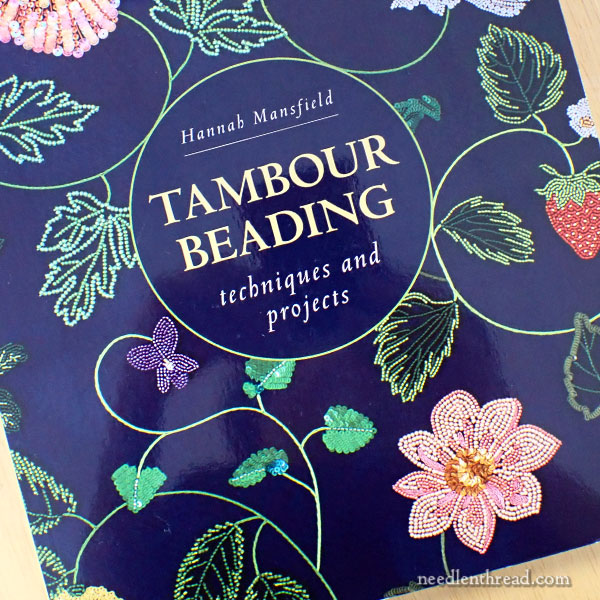
Tambour Beading: Techniques and Projects by Hannah Mansfield is a thorough, detailed book on tambour work.
While the title might lead you to believe it’s only about beading, it’s not. It’s about various kinds of embroidery techniques you can do with a tambour hook – from simple tambour embroidery, to tambour beading (beads and sequins), to appliqué and to dimensional projects.
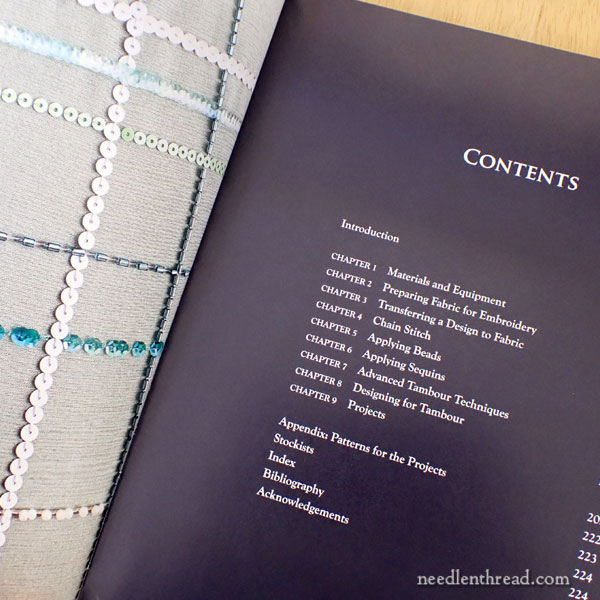
This is the most thorough book on tambour work that I’ve seen, and I don’t think it would be a stretch to say it is the most thorough book on tambour work that’s been written to date. I’ve got a decent small collection of tambour related books in English and other languages, but none of them come close to Mansfield’s book.
Besides delivering all the foundational information and instruction that you need – not just to get started in tambour work, but to advance in it and to branch out in various ways with it – the book offers practice projects along the learning journey, plus seven final projects with patterns, materials lists, and step-by-step instructions.
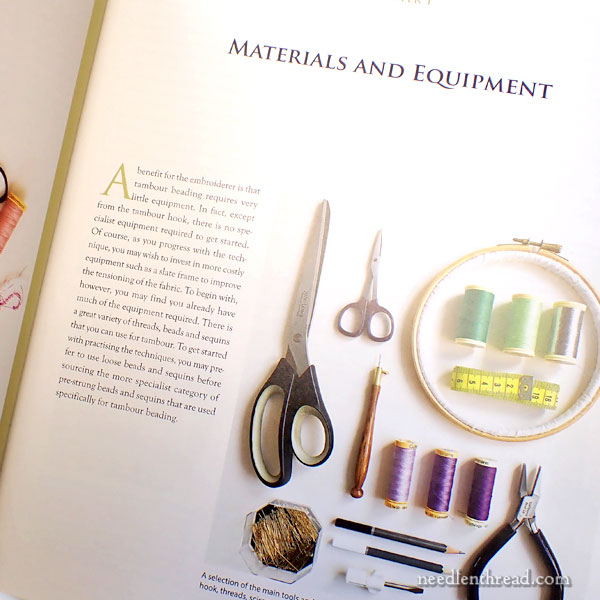
After the introduction, the book launches straight into materials and equipment used in tambour embroidery.
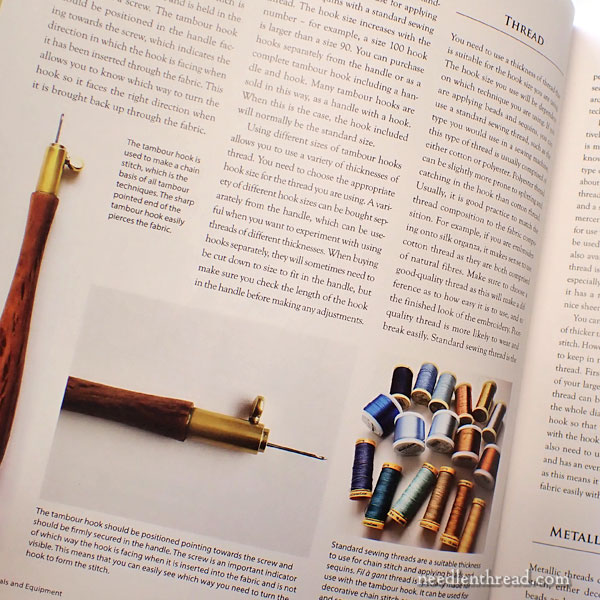
Of course, there’s tool talk. Tambour embroidery is reliant on the tambour hook, so we are introduced to that tool, but there’s oh-so-much-more in this section, as well!
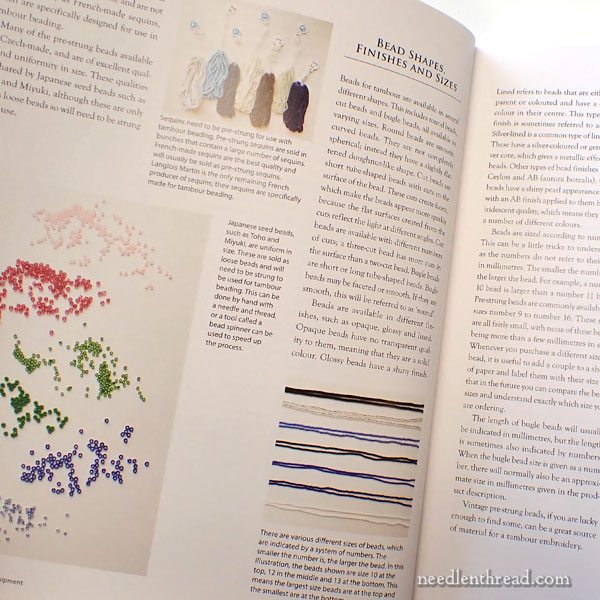
There’s plenty of information about beads and sequins, beads on strings, beads that you string yourself…
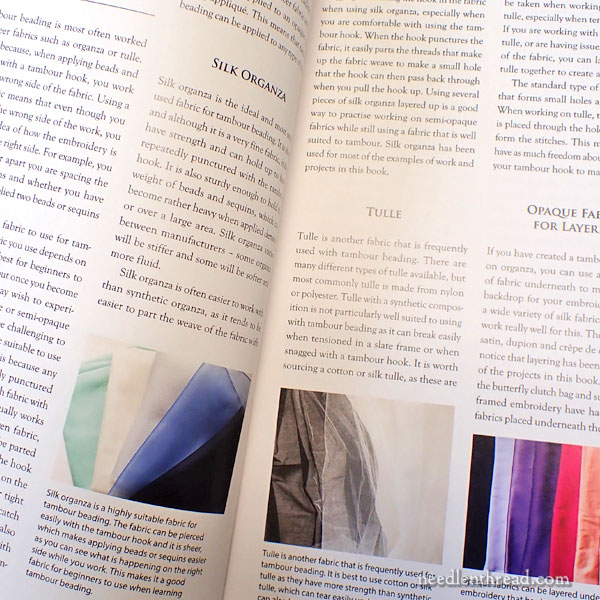
…and on fabric.
While tambour can be worked on pretty much any type of fabric, it is often seen on sheer fabrics, like organzas and tulle, and these can be backed by opaque fabrics. So the author discusses a variety of types of fabric for tambour beading.
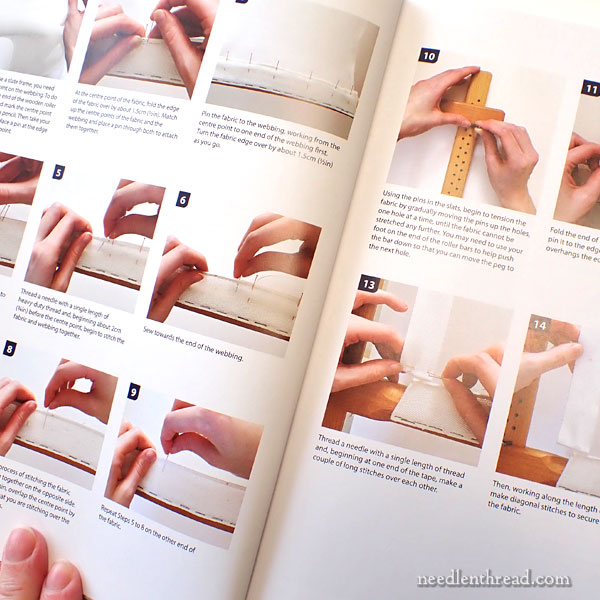
You’ll find information and instructions for the use of hoops and frames. Tambour work is kept under tension on a frame (like a slate frame) or a hoop while it’s being worked.
You’ll find detailed photos of the process of setting up a slate frame, as well as photos and instruction on mounting fabric correctly in a hoop.
In this section on preliminaries to stitching, you’ll also learn how to transfer designs. In short, you’ll learn everything to get your project set up and ready to stitch.
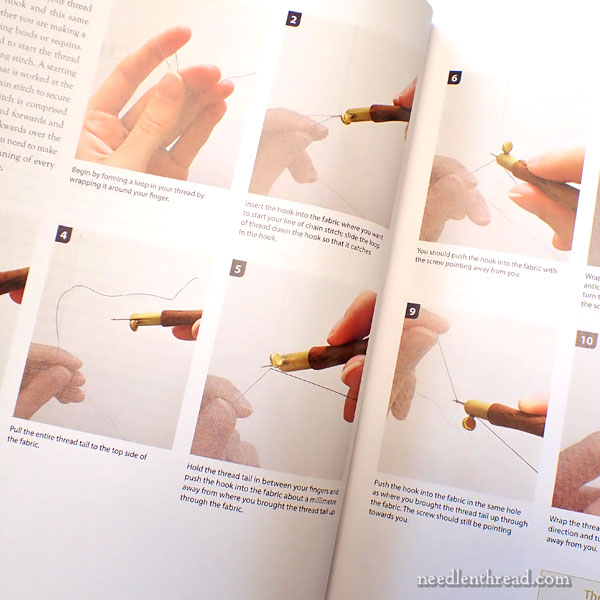
After comprehensive information on all the Needful Things required for tambour work, we launch into the stitching instructions, starting with the chain stitch.
Beginners and advanced stitchers alike will appreciate the stitching instructions in this book, because they are delivered via clear step-by-step photos and well-written, easily understandable text.
The instructions are super well done!
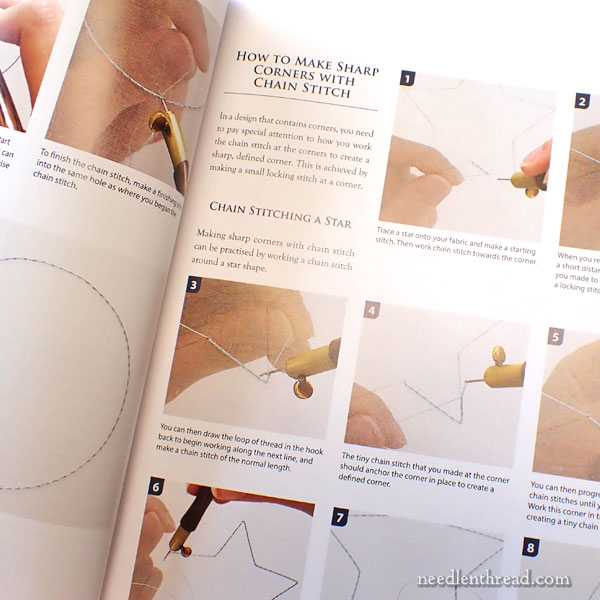
And like all the other details in the book, the instructions are detailed and exhaustive.
The author covers everything, from starting and ending threads, to turning corners, to stitching circles, to filling in shapes – everything you need to know in order to stitch with a tambour hook.
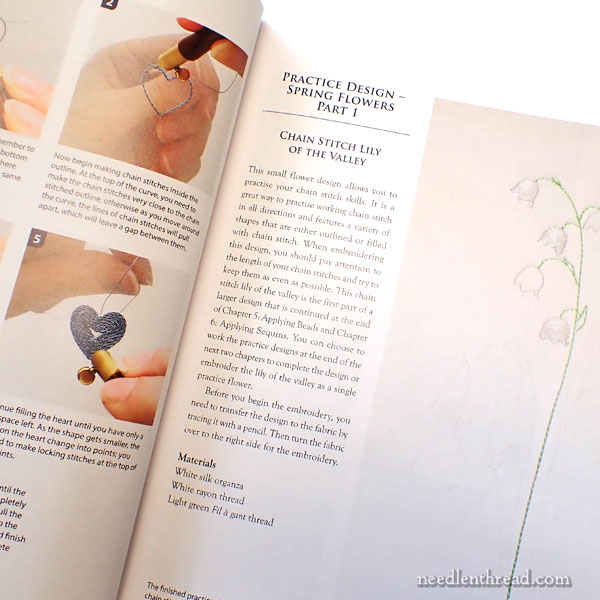
And, to practice what you learn in this section, you’ll find a small practice project, which is developed in step-by-step photos so that you can easily follow along with it.
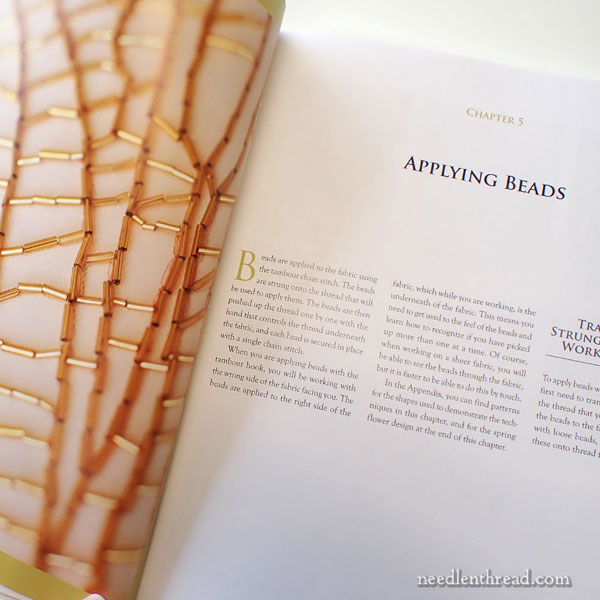
Then, we move on to beading techniques with the tambour hook.
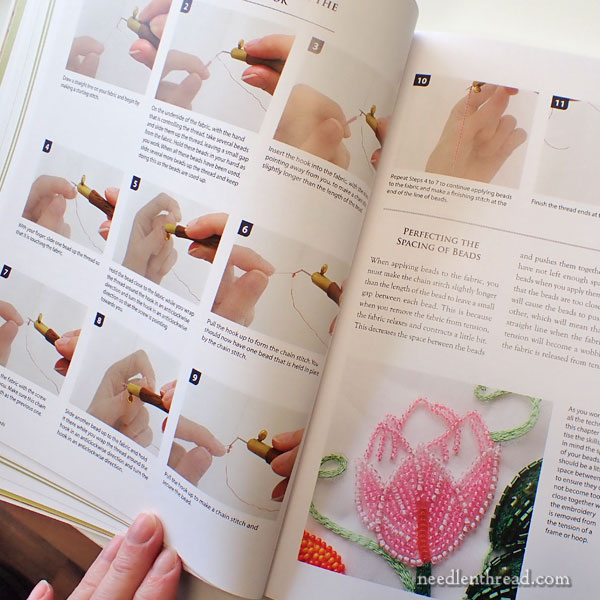
This section follows the same format as the previous, with step-by-step photo instruction of all the different ways to add beads (and different types of beads)…
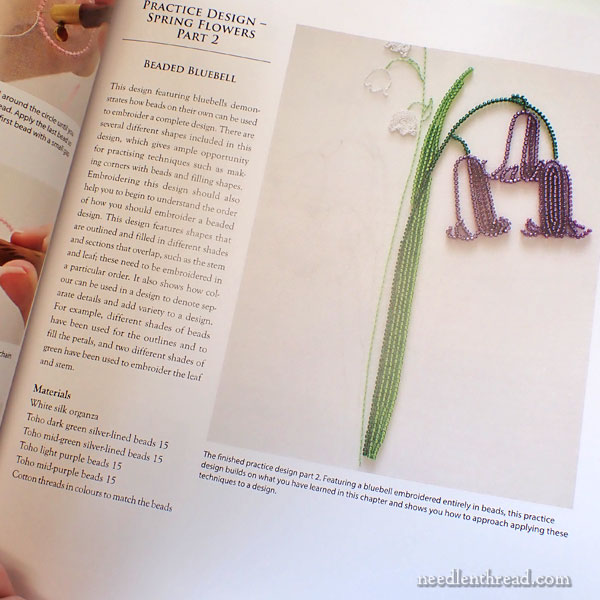
… along with a small practice project.
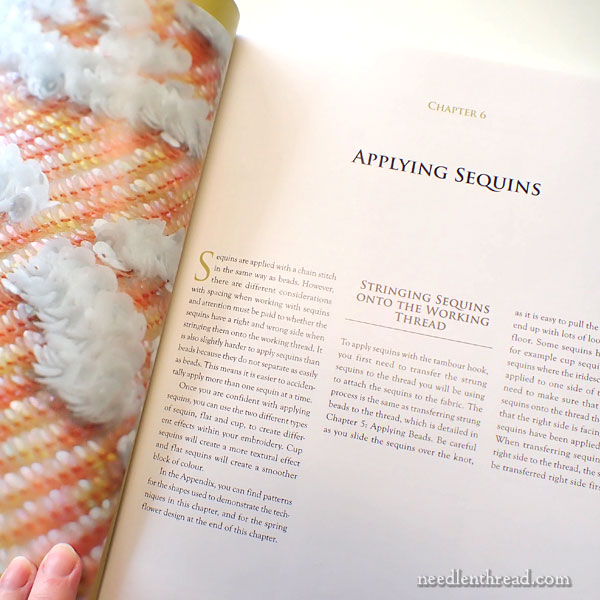
The same format continues for adding sequins…
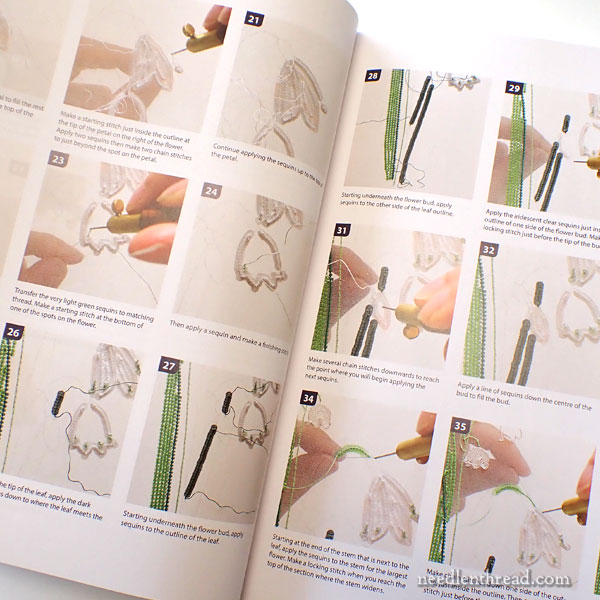
…with everything demonstrated step-by-step, including the practice project.
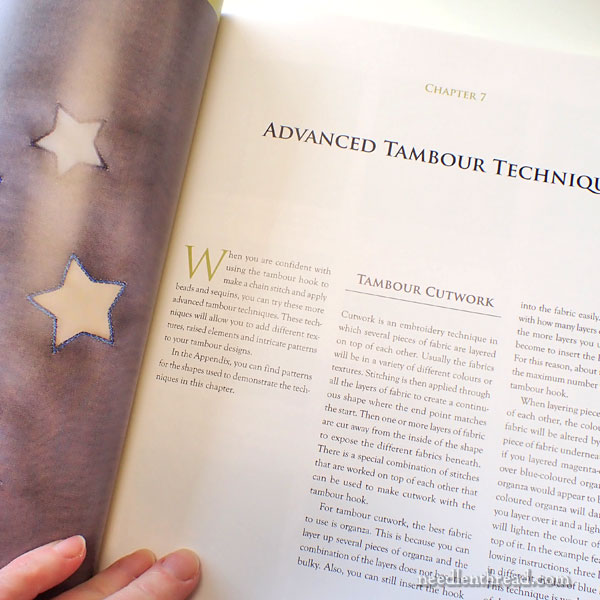
Then, we move into some advanced tambour techniques, that include things like cutwork, appliqué, and stumpwork (building three-dimensional works with embroidered pieces).
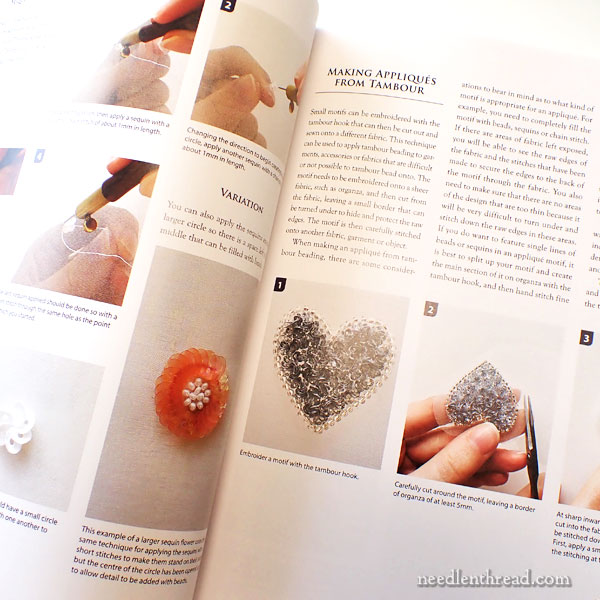
All of these techniques are suitable for incorporating into other types of embroidery, too!
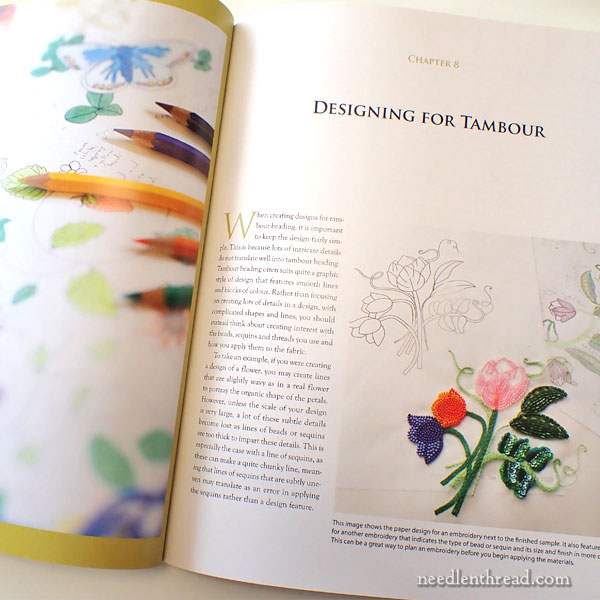
There’s a nice section on designing for tambour embroidery, with good information on approaches to take when working a project with a tambour hook.
This gives the embroiderer a wide range of design opportunities for personal and professional projects.
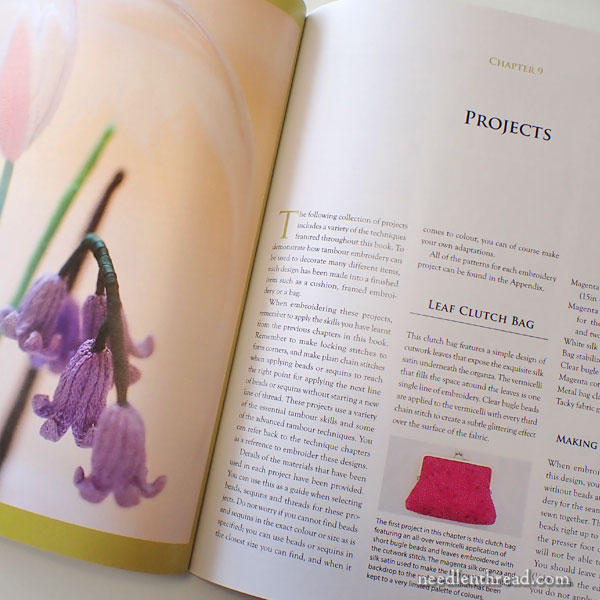
And then we move into the projects.
As mentioned, there are seven final projects in the book, with which you can show off your newly acquired tambour skills.
A clutch purse, a cushion, framed works, three-dimensional flowers, a Christmas garland of small ornaments – it’s a nice variety of projects.
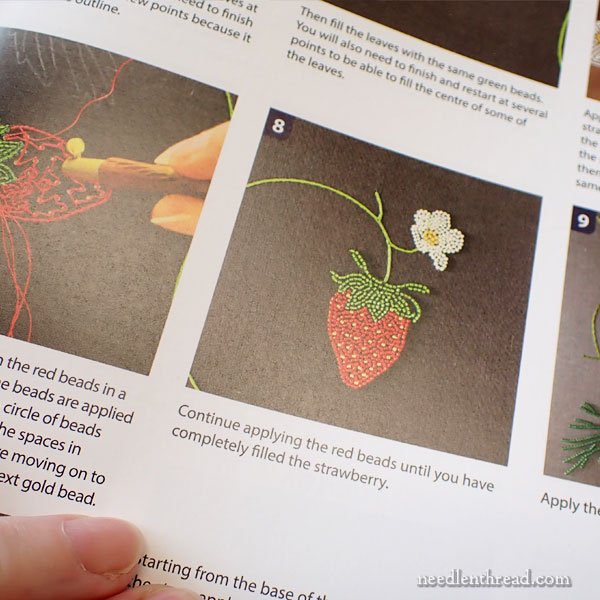
Among the projects is a floral panel that features this adorable little strawberry. I love it!
The projects are presented with a materials list, and then step-by-step photo instruction for completing the embroidery and any finishing required.
In the back of the book, there’s an appendix with a collection of all the patterns used throughout the book.
In a Nutshell
If you are at all remotely interested in tambour work, this book is a must-have for your stitching library. It covers just about everything you’d want to know to get started with tambour work and to advance in tambour techniques.
Pros and Cons:
Pros: Thorough instruction, very clear pictures, lots of step-by-step photography, good projects – there is an abundance of positives to recommend this book!
Cons: the only con on my list is that, with the final projects, there are no large pictures of the finished final projects. All the pictures of the finished projects are quite small, so it’s hard to see the finished piece in any detail at all. However, the components of the project – all the individual elements – are clearly visible in all the step-by-step photos. I always appreciate seeing large photos of finished projects in a project book – it makes it easier to know what I’m aiming for.
But that’s not at all a deal-breaker on this book. It’s so jam-packed with excellent instruction and good information that this one tiny con is negligible, to say the least.
Where to Find It
In the US, you can pre-order Tambour Beading now, through Amazon. It’s due to be released in October here. You’ll find it listed here at the top of my Amazon Recommendations list.
Otherwise, it’s available through Amazon UK. Please remember to check the currency conversion rate and the shipping rates if you’re ordering from the UK and not located there.
Purchases made through my Amazon Recommendations page may result in a small commission for Needle ‘n Thread, at no extra expense to you.







Thank you so much for this fabulous recommendation! I’ve been meaning to learn tambour embroidery but have struggled with learning resources – this looks perfect!
Désolée si je vous écris en français mais lorsque je lis vos mots, je mets un traducteur.
Croyez-vous qu’il existe un livre comme celui-ci en français.
Merci à l’avance pour votre réponse.
Gisèle Moyen, Mirabel, Que.
I have a book called “Broderie de Luneville” in French. For me, I prefer Mansfield’s book (in English) because French is not my first language, but you might prefer the French book. I hope that helps!
Thank you for showing us this! I must get this book. And a slate frame…
Thank you so much for this book review! I’ve had my eye on this book for awhile now and I am definitely going to pre order it! I’m excited to try these techniques out!!